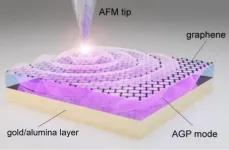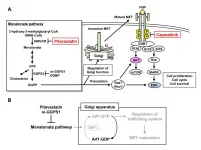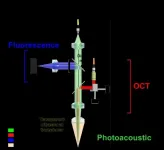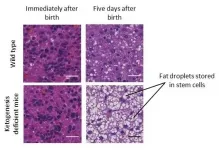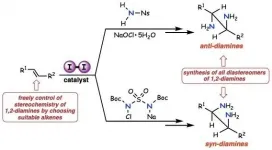At face value: Using facial analysis algorithm to track changes due to Parkinson's disease
Scientists showcase how AI-based software can reveal trends in facial changes caused by neurological disorders
2021-03-16
(Press-News.org) Parkinson's disease (PD) is a well-studied neurodegenerative disorder that affects between 7 and 10 million people worldwide. Despite PD being a recurrent topic in the medical literature for over 200 years, its mechanisms are largely unclear, and existing treatments are aimed at improving the patient's symptoms.
Among PD's most common symptoms are motor problems, including as tremors, slowness, and muscular rigidity. These, combined with many non-motor symptoms, cause many PD patients to develop facial abnormalities, such as face skin problems and difficulties making facial expressions. Such problems are not to be taken lightly, as one's face plays a crucial role not only in self-esteem, but also when interacting with others. Unfortunately, facial changes in PD patients are difficult to track and quantify with conventional techniques.
But what if artificial intelligence (AI) could provide the tools we needed all along? In a recent study published in Brain Supplement, a team of scientists from Okayama University, Japan, tested whether modern facial detection and analysis algorithms could be useful in the context of PD. Led by Dr. Koh Tadokoro of the Department of Neurology, the team recruited 193 people, half of which were PD patients at different stages of the disease and the other half were healthy control subjects. The subjects were taken to a consulting room in the University's clinic, and the researchers took a single photograph of their face without giving any special instructions.
Once the pictures were taken, the team used commercially available AI software to detect the subjects' faces and analyze some of their attributes; namely apparent age, expressed emotion, and facial skin condition. Through statistical analyses, they explored whether AI-based algorithms could find significant differences in these attributes between the control group and the PD group.
Interestingly, the age gap, which is the apparent age estimated by the software minus the real age of the subject, was a factor that differed between both groups. On average, the age gap for PD patients was higher than for healthy subjects, revealing that the former tended to look slightly older than their actual age in the eyes of the AI. In addition, the facial expression of PD patients was more likely to be classified as "expressionless" compared with healthy subjects, who were significantly more likely to carry an expression classified as "happiness." On the other hand, in terms of skin condition, the researchers found no noticeable differences between both groups.
Overall, the strategy adopted in the study and the results gathered could pave the way for incorporating AI-based software into future research on the symptoms of PD. The approach the team used is relatively simple and cost-effective, as Dr. Tadokoro explains: "Whereas most previous studies evaluated the facial changes caused by PD during movement or tasks, we found evidence of specific facial changes based solely on a single photograph using modern AI ." Additionally, the team also noted some limitations of facial analysis software, such as performing worse in some regards for people with darker skin or being less accurate when estimating the age of Asians. Such problems can and should be addressed before the software is put to use in clinical research.
In short, it is possible that AI-based tools bear untapped potential for the rapid, quantitative analysis of patients with PD. Excited about the results, Dr. Tadokoro remarks: "We hope our study accelerates the use of AI technology for the diagnosis and treatment of patients with Parkinson's and other neurodegenerative diseases. " Let us hope future researchers take note of the power of AI in the context of neurological disorders to push the field forward towards a deeper understanding.
INFORMATION:
[Attachments] See images for this press release:
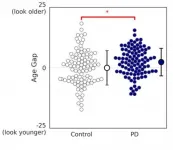
ELSE PRESS RELEASES FROM THIS DATE:
2021-03-16
Superconductivity is a complete loss of electrical resistance. Superconductors are not merely very good metals: it is a fundamentally different electronic state. In normal metals, electrons move individually, and they collide with defects and vibrations in the lattice. In superconductors, electrons are bound together by an attractive force, which allows them to move together in a correlated way and avoid defects.
In a very small number of known superconductors, the onset of superconductivity causes spontaneous electrical currents to flow. These currents ...
2021-03-16
KAIST researchers and their collaborators at home and abroad have successfully demonstrated a new methodology for direct near-field optical imaging of acoustic graphene plasmon fields. This strategy will provide a breakthrough for the practical applications of acoustic graphene plasmon platforms in next-generation, high-performance, graphene-based optoelectronic devices with enhanced light-matter interactions and lower propagation loss.
It was recently demonstrated that 'graphene plasmons' - collective oscillations of free electrons in graphene coupled to electromagnetic waves of light - can be used to trap and compress optical waves inside a very thin dielectric ...
2021-03-16
An analysis has found deforestation is severely affecting forest bird species in Colombia, home to the greatest number of bird species in the world.
University of Queensland-led research, steered by Dr Pablo Negret, analysed the impact of deforestation on 550 bird species, including 69 only found in the South American nation.
"Our study has shown an astonishing reduction in bird species habitat," Dr Negret said.
"One third of the forest bird species in Colombia have lost at least a third of their historical habitat, and that's just using the most recent data we have available - from 2015.
"Moreover, 18 per cent or 99 species have lost more than half of their historical habitat to date.
"By 2040, we expect this will increase to 38 per cent or 209 species.
"Sadly, many of those ...
2021-03-16
A team of scientists led by Nanyang Technological University, Singapore (NTU Singapore) has developed a device that can deliver electrical signals to and from plants, opening the door to new technologies that make use of plants.
The NTU team developed their plant 'communication' device by attaching a conformable electrode (a piece of conductive material) on the surface of a Venus flytrap plant using a soft and sticky adhesive known as hydrogel. With the electrode attached to the surface of the flytrap, researchers can achieve two things: pick up electrical signals to monitor how the plant responds to ...
2021-03-16
Researchers from Tokyo Medical and Dental University (TMDU) uncover potential novel therapeutic strategies for oral and esophageal carcinomas
Tokyo, Japan - Discovering and treating tumors before they spread throughout the body is key for cancer patients to achieve positive outcomes. When tumor cells spread, which is known as metastasis, they can take over other organs and lead to death. Oral and esophageal carcinomas, or mouth and throat cancers, frequently metastasize to the lymph nodes. Unfortunately, there are currently no therapies that are specific to treating these particular cancers. Now, researchers at Tokyo Medical and Dental University (TMDU) identified several drugs ...
2021-03-16
A quadruple fusion optical and ultrasound imaging system has been developed that allows diagnosis of eye conditions or tumors or to see the environment inside the body using a transparent ultrasound transducer.
Professor Chulhong Kim of POSTECH's Department of Electrical Engineering, Convergence IT Engineering, and Mechanical Engineering, Dr. Byullee Park of Department of Convergence IT Engineering, Ph.D. candidate Jeongwoo Park of School of Interdisciplinary Bioscience and Bioengineering, Professor Hyung Ham Kim of Department of Convergence IT Engineering, and Professor Unyong Jeong of Department of Materials ...
2021-03-16
The research, by an international team from the Autonomous University of Madrid and the Technical University of Denmark, used 3D printing to create scaffolds for engineered flat brain organoids. The scaffolds allowed the brain organoid size to be significantly increased and after 20 days, self-generated folding was observed. END ...
2021-03-16
Military expenditures are highly counterproductive to green economic growth- documented by a recent study conducted by UrFU economist collaboration with an international research team. Sustainable economic development or green growth requires cleaner energy and green technology that can mitigate the negative externalities (e.g., carbon emission) of economic growth. The study utilized various macroeconomic indicators for 21 OECD countries over the year 1980-2016. This empirical study focusing on the dynamic impact of innovation, militarization and renewable energy on the green economy is published in the journal "Environmental Science and Pollution Research".
On the one hand, the military-industry (land vehicles, aircraft, and sea-vessels) consume a gargantuan ...
2021-03-16
Ketone bodies are generally an alternative energy source during starvation, but in newborns, ketogenesis is active regardless of nutritional status. In a recent study from END ...
2021-03-16
Osaka, Japan - Synthesizing pharmaceuticals for cancer, viral diseases, and other medical conditions is slow work. A particularly challenging chemical transformation is to start with what's known as an unactivated alkene--a common molecular building block--and end up with a vicinal diamine; i.e., installation of two nitrogen units into carbon--carbon double bonds. The result is a chemical unit that's present in medications for influenza and colorectal cancer.
Commonly, researchers must use rare, toxic metals and harsh reaction conditions to complete this transformation. Using a more sustainable catalyst for the reaction could solve such problems. Previous research has attempted to do so, ...
LAST 30 PRESS RELEASES:
[Press-News.org] At face value: Using facial analysis algorithm to track changes due to Parkinson's disease
Scientists showcase how AI-based software can reveal trends in facial changes caused by neurological disorders


